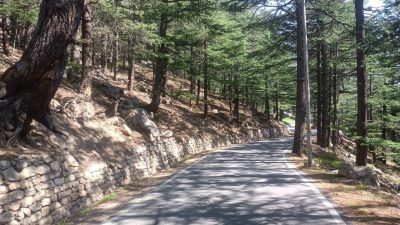
While protection of natural forests has always been a very important part of the efforts to protect environment and biodiversity, its importance has increased further in times of climate change, from the perspective of mitigation as well as adaptation. Further the experience worldwide has been that the protection of existing natural forests in good condition can be best achieved on sustainable basis with the close involvement of rural communities of neighboring areas. Tribal communities are found closer to forests in India and elsewhere and traditionally, their life has been more closely inter-linked with natural forests of their area compared to other people. They also have much better and deeper knowledge and understanding of forests, their ecology and biodiversity, and of the wild-life living in and belonging to forests.
Traditionally there has been a close protective relation between tribal communities in particular (as well as other rural communities) and the forests existing close by. Unfortunately during colonial times the integrity of the protective relationship between people and forests came under enormous strain as arbitrary decisions relating to violations of needs and rights of communities were taken. Even after independence the injustice done to tribal communities was not undone adequately, despite efforts being made in this direction, while some new threats also appeared. Regrettably, even conservation projects were often planned in such a way that instead of tribal communities being involved in protection of forests they were either displaced or their forest rights were severely restricted.
Some eminent conservationists have warned that this is a highly distorted approach which is harmful for tribal communities as well as for conservation work. Salim Ali, the great ornithologist, had warned against such a short-sighted, one-sided approach and appealed to fellow-conservationists to be much more considerate of the needs and viewpoints of villagers living close to forests. In Bharatpur Park area in Rajasthan some years back, an arbitrary decision to ban grazing led to protests and subsequent police firing on protesters which led to the death of seven villagers. However a study by the Bombay Natural History Society later revealed that buffalo grazing was “an integral part of the ecosystem, helping to counter the tendency of the wetland to turn into grassland.” In some other cases also , including the famous Valley of flowers in Himalayan region, bans on traditional grazing practices had a negative impact on diversity and required a re-introduction of grazing or grass-cutting.
It is much better to involve the nearby rural and tribal communities, including nomadic and semi-nomadic ones, in deciding sustainable patterns of use while at the same time securing their help in protecting forests. Work such as extinguishing forest fires (which have been increasing in times of climate change) and rainwater harvesting and water conservation in and near forests is best taken up with the help of rural and tribal communities of areas close by. Again these communities can play the most useful role in protecting wild life from poachers or protecting trees from illegal loggers and smugglers.

The regeneration of degraded forest land is a very important task which again is most likely to succeed when taken up with the involvement of local people. This is very different from monoculture plantations. Instead the effort should be try to mimic nature and natural forests, in terms of local conditions and biodiversity, as much as possible. One way forward is to give the responsibility to a group of poorest villagers for a certain area. They can fence this area, using wages under various government schemes, providing a temporary rest to the land to allow it to regenerate. This is very different from arbitrarily imposed longer-term or forever grazing bans. Soil and water conservation work is also taken up, utilizing schemes like rural employment guarantee scheme. Once forest has regenerated adequately, grazing can be gradually re-introduced. While the group of villagers who helped in this regeneration gets wages initially, over a longer-term they get rights over non-timber forest produce of the regenerated forest, to be harvested or used on sustainable basis.
Such ideas, or their variants, can be used to take forward regeneration of forests at many places, while also increasing green employment steadily and paving the way for more permanent forest based livelihoods to increase as well. The various jobs that are available for protection of forests, biodiversity and wild life can also be gradually given more to more such local people, particularly those from tribal communities (others too). Thus to protect forests and increase forest area as well as to protect wild-life, local people are not displaced; instead their life and livelihood is better integrated with increase of forest cover, which in turn contributes to climate mitigation as well as adaptation, and in addition contributes also to reduction of disasters like floods and landslides.
*
Click the share button below to email/forward this article. Follow us on Instagram and X and subscribe to our Telegram Channel. Feel free to repost Global Research articles with proper attribution.
Bharat Dogra is Honorary Convener, Campaign to Save Earth Now. His recent books include Saving Earth for Children, Planet in Peril, Man over Machine and A Day in 2071. He is a regular contributor to Asia-Pacific Research.
Global Research is a reader-funded media. We do not accept any funding from corporations or governments. Help us stay afloat. Click the image below to make a one-time or recurring donation.

Comment on Global Research Articles on our Facebook page
Become a Member of Global Research
Source link

